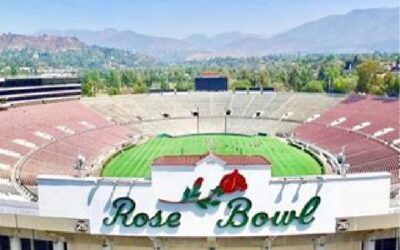by: Mike Plutino
Markets of all shapes and sizes continue to dominate food and beverage capital planning, renovations, and new project development discussions within the sports and entertainment landscape. Although the “movement” is just a few years old, the pace of change is rapidly accelerating, and for good reason.
Why Markets?
We have been kidding ourselves for years. Traditional “belly-up” concession stands designed in the 1930s largely for movie theatres evolved at a snail’s pace, and except for more cooking capacity, improvements to technology, and some concept identity upgrades, the overall concession stand concept was not keeping up with the QSR market and the needs of today’s customers. Fans were often spending the majority of halftime or intermissions in long, slow-moving lines only to be greeted by an employee who was seldom additive to the overall experience when they finally reached the counter. Although we were attempting to solve the issue with increased point-of-sale ratios, a more radical solution was needed and one that had the potential to double the fan throughput within the same square footage and time period. In one of the most dramatic shifts in high-volume food and beverage history, markets of all shapes and sizes are changing the game.
It’s not a one-size-fits-all all approach
All markets are not created equal and there is a distinction between “Grab and Go” and a robust market concept that has a unique identity focused on freshly prepared food prepared in view of the fan. While both versions can live within the same venue, the speed of transformation within the industry has blurred the lines between market options with many not fully understanding the difference.
Markets can operate with half the staff – right?
Wrong. While this was the initial belief ( including us ), we have quickly learned that a high-volume market will often require the same amount of staff to operate as even with Just Walk Out and self-checkout technology, additional staff are required to handle the increased volume of business and act as “ambassadors” to assist with new technology and perform I.D checks for alcoholic beverage purchased.
Show us the Money:
With an improved throughput of 1.5-2x improvement from a traditional belly-up concession stand, a market format can have a significant impact on revenue with sales often doubling with a very minimal fan learning curve. While revenue is important, the impact on the overall fan experience cannot be understated as fans can now use a restroom, get something to eat, and be back in their seats for the start of the show or game.
Technology:
Although the Amazon and Zippin Just Walk Out technology often dominate initial market discussions, there are a wide variety of options to consider with a vast difference in cost. There is no one-size-fits-all approach and technology solutions need to be paired with the needs of the venue with the number of events often being a key consideration. The solution for 6 events a year Collegiate venue will differ greatly from a Major League Baseball venue.
The Secret Sauce:
We continue to learn the nuances of markets and what makes some more successful than others, along with how different food and beverage providers approach them. In our view, there are several market fundamentals that should be understood:
- POS Ratio – for every traditional POS being replaced by self-checkout, 2 self-check-out terminals should be deployed to handle the increased transactional volume of sales.
- Less is More – the product offering should be limited to 3-4 hot items. Any more and it will be challenging to prepare food “just in time” during peak periods. A grab-and-go market requires that guests and grab….and go. The minute food is not ready, it becomes a stand-in line and wait market.
- The Details Matter – guests want a high-quality offering and do not want to feel they are “trading down” in a market vs. concession stand. Food needs to be presented open-faced ( not wrapped as if thousands were made two hours ago ) and in small quantities for freshness.
- Functionality Matters – High-volume markets need to be set up for high volume. Beverage and hot food should be re-stockable from behind to allow for easy replenishment. With markets being new to many fans, signage and flow are key to managing peak periods. Staff should be in place to direct guests past a congested area if they are in the market for a quick beverage or snack.
- Identity, Signage, and Merchandising Matter – The opportunity within current and future markets lies in the visual appeal of the market. A retail merchandising skill set is needed to elevate a space from concession to market and, in our view, is one of the missing links in many of today’s markets. Concept identities are important and need to look more like an Eataly than a Quick Trip Express ( gas station ).
- Supervision and Staffing – Markets require a higher level of supervision as decisions have to be made throughout the event to continually adjust the amount of product being prepared and how to maintain high-quality offerings with more moving parts and so much food being prepared in advance.
We are big believers that markets are the single most impactful change occurring within the high-volume food and beverage industry in many years and that we are just scratching the surface of how transformational markets of all shapes and sizes will be to the industry when we look back in 10 years.



